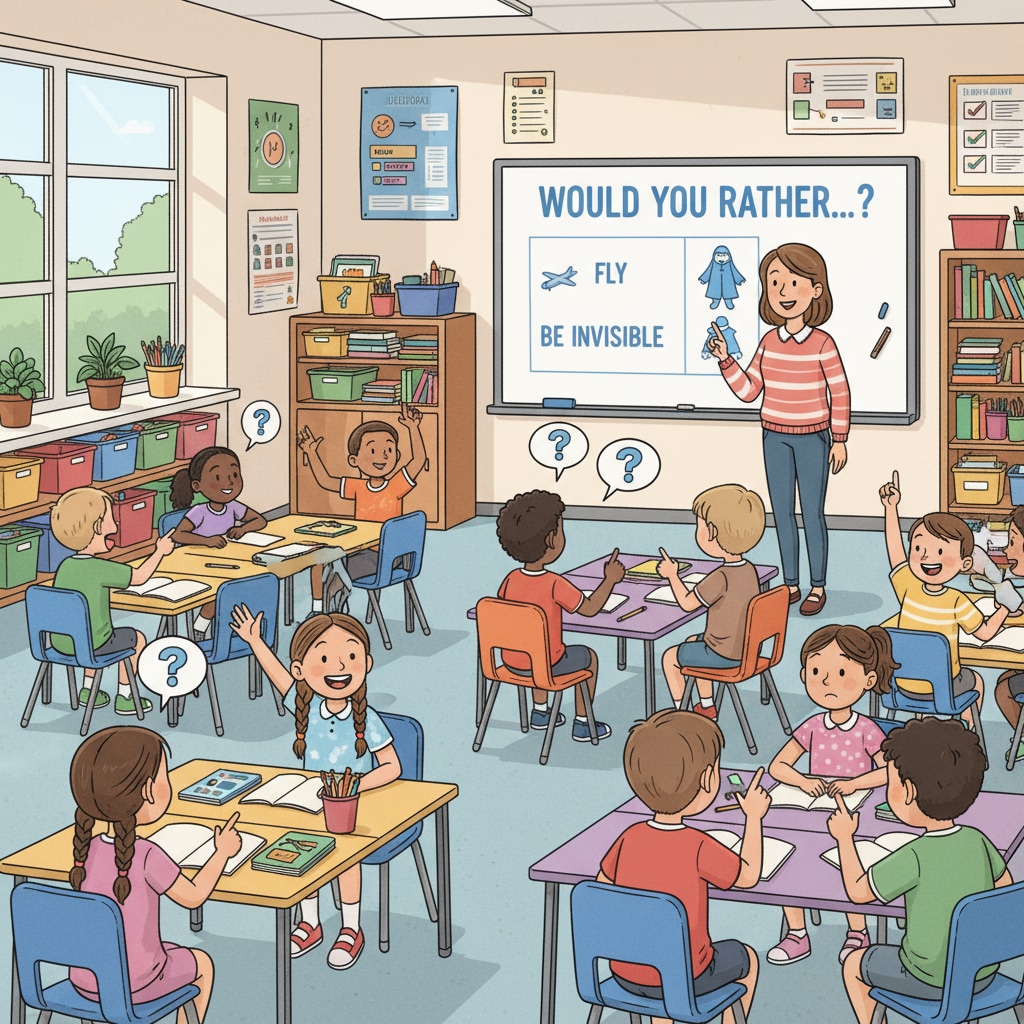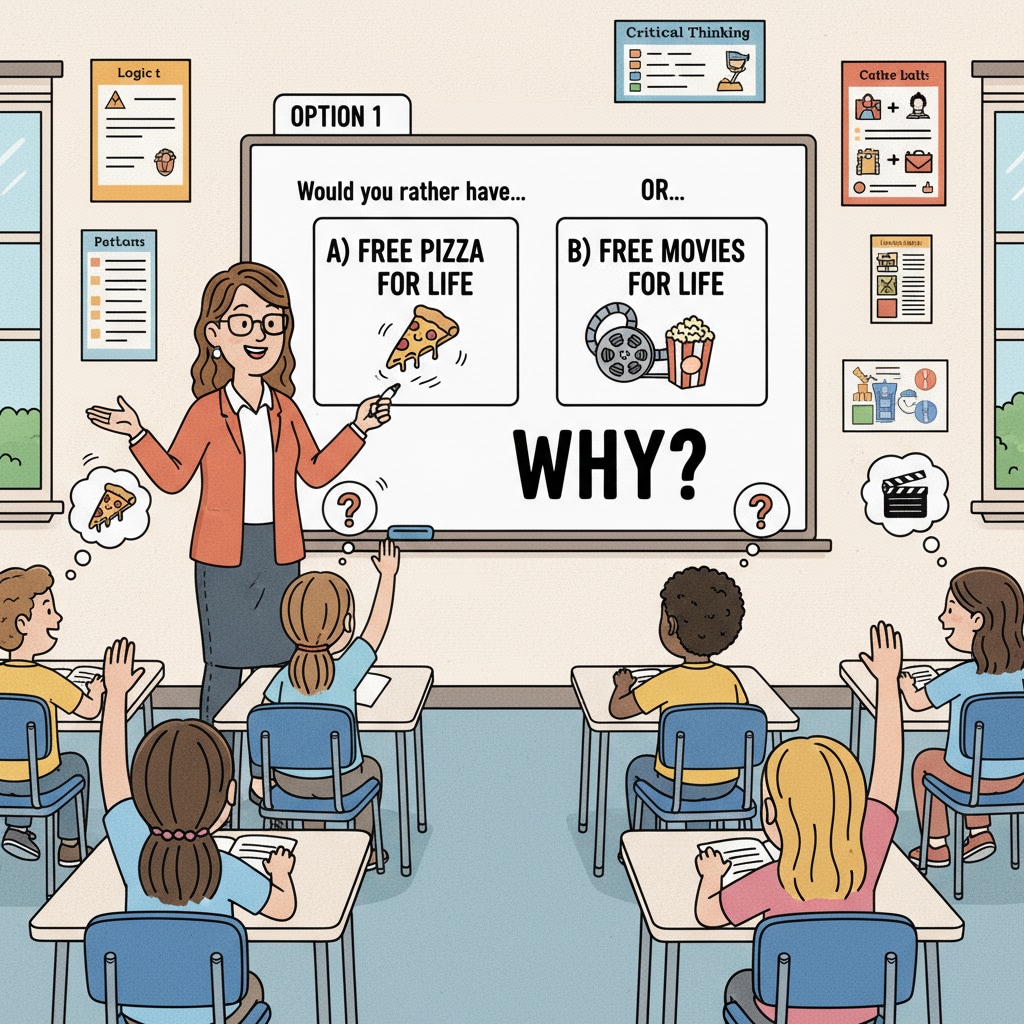“Would You Rather” is not just a simple game; it has emerged as a valuable educational resource and an essential tool for teachers. This unique concept has found its way into K12 classrooms, offering a fresh and exciting approach to learning.

In this article, we will explore how this game can be a powerful asset in promoting critical thinking, language development, and enhanced classroom interaction.
The Basics of “Would You Rather”
“Would You Rather” is a game that presents players with two options and asks them to choose one. For example, “Would you rather have the ability to fly or the ability to breathe underwater?” This seemingly simple choice requires players to think, evaluate, and make a decision. It’s a great way to start discussions and get students thinking creatively. According to Critical thinking on Wikipedia, critical thinking involves analyzing, evaluating, and forming judgments, and the “Would You Rather” game is an excellent way to start cultivating these skills in students.

“Would You Rather” as an Educational Resource
As an educational resource, “Would You Rather” offers numerous benefits. Firstly, it encourages students to express themselves. When choosing between two options, students need to explain their reasons, which helps improve their language skills. In addition, it promotes critical thinking. Students must weigh the pros and cons of each option, which is a crucial part of the learning process. Education on Britannica emphasizes the importance of such activities in the educational journey. It also fosters classroom interaction as students discuss and debate their choices, creating a lively and engaging learning environment.
Teachers can use this resource in various ways. For instance, they can use it as a warm-up activity at the beginning of a class to get students excited and focused. Or, it can be integrated into the curriculum to reinforce key concepts. For example, in a science class, a “Would You Rather” question could be “Would you rather study the solar system or the human body?” This not only makes learning fun but also helps students think about scientific topics in a new way.
Readability guidance: The use of short paragraphs and lists helps summarize key points. Each H2 section provides a clear focus, and the use of external links adds credibility. Transition words like “firstly,” “in addition,” and “for instance” are used to make the text flow smoothly.


